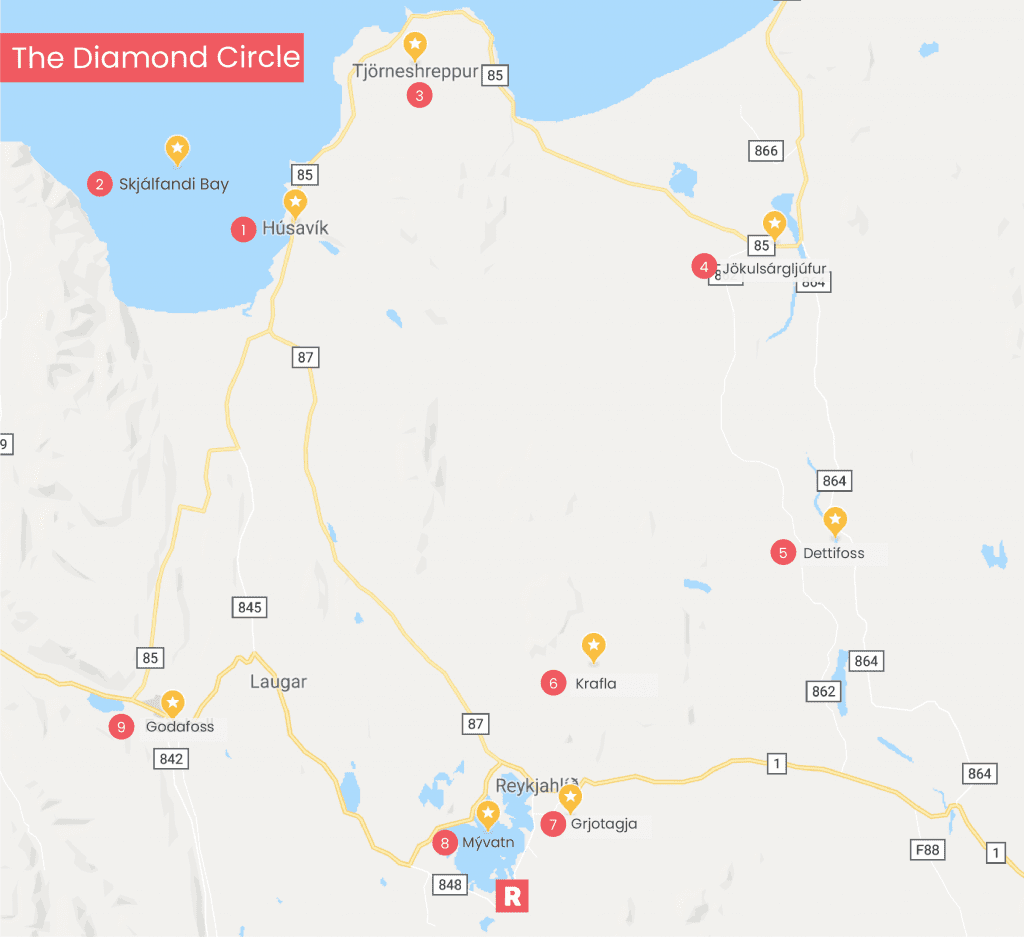You might be already used to hear some route names like the Golden Circle or the Westfjords route, but Iceland has other ways less taken but still very beautiful. In this blog, we will take you around the Diamond Circle, a 250km circuit on Northeastern Iceland. Our trip will start and end in Húsavik, the main town in the Diamond Circle.
Húsavík
With a population of around 2,310 inhabitants, Húsavík is the town of Northeastern Iceland and the oldest settlement in the country. If you are traveling from Reykjavík, you will have two options. Driving to Húsavík will take you around 5 hours and 45 minutes, heading up north and driving almost by the coastline, passing through Akureyri. Another option is taking a flight from Keflavik Airport. You will save time because the ride is only 45 minutes to Akureyri Airport, and from Akureyri, the drive will take you around one hour.
Húsavík is Iceland’s whale-watching capital, and it is becoming more popular to visit between its travelers. The town is located in the shore of Skjálfandi Bay, and it is said it is northeast’s cutest fishing town for its colorful houses and museums. The activities to do in Húsavík include visiting its most famous landmark Húsavíkurkirkja, a 26-meter-high wooden church that looks across the harbor. The church was built in 1907 and designed by Icelandic architect Rögnvaldur Ólafsson. As we said earlier, this is considered the whale capital, and you will definitely find out more about this in its two museums, the Whale Museum and the Museum House. The Húsavík Whale Museum works along with the University of Iceland’s Research Center providing exciting information about whales and its environment, and utilizing this educational ingredient in the summer whale watching trips. With 8 exhibition rooms, the Whale Museum is a place you have to see!
If you are looking for a nice place to eat we recommend you these three places: Hvalbakur Grill & Café, Gamli Baukur, and Naustið. They are really cozy with delicious food. Walking around the Húsavík Port is also a very good plan after having something to eat.



